The Alhambra of Granada is one of the very few Islamic palaces to have survived almost intact since medieval times. Founded as a small fortress in the year 897, it was expanded to its present beauty in the 14th century by the Nasrid rulers of the Kingdom of Granada. After the conquest of Granada by Isabel and Fernando in 1492 (see pages 14–17), the Spanish monarchy championed its preservation for two centuries. A period of abandonment followed. In the 19th century, it was rediscovered after artists and travelers from across the world began to visit it. The most famous, an American writer named Washington Irving, even took residence within its crumbling walls. He wrote, “Such is the Alhambra…an elegant memento [reminder] of a brave, intelligent, and graceful people who conquered, ruled, and passed away.” In recent times, the Alhambra has been restored, excavated, and studied in detail. Today, it is the most visited historical site in Spain.

A Palace City
The earliest surviving descriptions of the Alhambra call it a fortress (hisn or ma’qid in Arabic) and a castle or palace (qa’lat al-hamra’— Arabic for “Red Castle” after the red color of its brick). Built atop Sabika Hill, one of the highest points in Granada, its first purpose was military. This function did not change until 1238, when it became the royal residence of the first Nasrid king, Muhammad Ibn Nasr. Curiously, the king’s nickname was Ibn Al-AhmAr, or “Son of the Red- Haired One.” Thus, the color of the “Red Fortress” of the Alhambra came to share a name with the new king.
The most important changes to the Alhambra came in the 14th century during the reigns of the Nasrid kings Muhammad III, Yusuf I, and Muhammad V. These included gardens, palaces, new military installations, a mosque, a school, look-out points, and many new fortified areas. These are the structures that survive today.
Thus, the Alhambra was much more a palace city than a palace. In addition to the ever expanding military and royal structures, the Alhambra had its own court of law, government halls, cemetery, military barracks, stables, workshops, and school for the royal children, in addition to kitchens, bathrooms, bakeries, and everything else needed to run a government, an army, and a royal household. Hundreds, if not thousands, of people worked on site daily.
Perfection!
Bu hikaye Dig Into History Magazine for Kids and Teens dergisinin March 2017 sayısından alınmıştır.
Start your 7-day Magzter GOLD free trial to access thousands of curated premium stories, and 9,000+ magazines and newspapers.
Already a subscriber ? Giriş Yap
Bu hikaye Dig Into History Magazine for Kids and Teens dergisinin March 2017 sayısından alınmıştır.
Start your 7-day Magzter GOLD free trial to access thousands of curated premium stories, and 9,000+ magazines and newspapers.
Already a subscriber? Giriş Yap

Worshiping Heaven
For almost 500 years, emperors of the Ming and Qing dynasties offered sacrifices and prayers at the Temple of Heaven in Beijing.
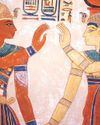
Peace Reigns
The news spread throughout Egypt—a new pharaoh, Ramses III, now sat on the throne.
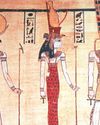
Problems To The East
Ramses III, the second king of Egypt’s 20th Dynasty, is viewed as Egypt’s last truly great pharaoh.
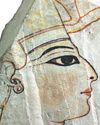
The Successors
Following the death of Ramses III, eight pharaohs, all named Ramses, ruled Egypt.
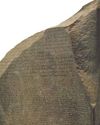
Stone Code
Hundreds of ships, led by the French general Napoleon Bonaparte, sailed from France in May 1798 on a secret mission.

Up & Away!
Eclipse observers often face unexpected difficulties, sometimes on their way to their chosen sites and sometimes at a site itself.

Edison's Eclipse Adventure
Thomas Edison (1847–1931) is the best-known inventor in American history.
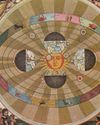
Digging Up Copernicus
The scientist “who made the Earth a planet” is how the Harvard-Smithsonian astronomer Owen Gingerich refers to Nicolaus Copernicus (1473–1543). Copernicus’ path breaking book, On the Revolutions of the Heavenly Spheres,challenged the centuries-old belief that the Earth stood stationary at the center of the cosmos.

Demosthenes & Cicero
Even today, more than 2,000 years after they lived, Demosthenes and Cicero are still considered two of history’s most outstanding orators.

Confucius & Socrates
Some teachers are so inspirational that their influence lives on long after they die.